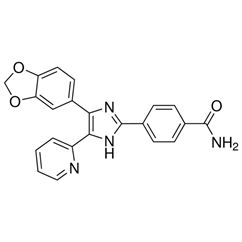Poly-L-Ornithine (0.1 mg/ml), 5 mg
Description
Poly-L-Ornithine is a synthetic amino acid chain that is positively charged having one hydrobromide per unit of ornithine. The molecular weight of Poly-L-Ornithine can vary significantly with lower molecular weight (30,000 Da) being less viscous and higher molecular weight (>300,000 Da) having more binding sites per molecule. This product's molecular weight ranges from 70,000 to 150,000 Da yielding a solution viscosity for easy handling while providing sufficient binding sites for cell attachment.
Applications
Poly-ornithine or poly-lysine improve the growth and adhesion of many cells including oligodendrocytes.| Product Details | |
|---|---|
| Source | Synthetic |
| Molecular Weight | 70 - 150 kDa |
| Sterilization Method | Filtration |
| Sterility | No growth |
| Cell Attachment Assay | Pass |
| Concentration | 0.1 mg/ml |
| Storage and Stability | 4°C |
Protocols
Instructions for Use
Note: Use these recommendations as guidelines to determine the optimal coating conditions for your culture system. To maintain sterility, perform all operations in a laminar flow hood.
1. A typical working concentration is 0.1 mg/ml. If a different concentration is desired, transfer desired volume of solution from the bottle to a dilution vessel. Dilute to desired concentration using tissue culture grade water or PBS.
2. Add appropriate amount of diluted material to culture surface. Typically, 1 ml per 25 cm2 is used. Rock gently to ensure uniform coating of culture surface.
3. After 5 minutes, remove excess solution by aspiration.
4. Thoroughly rinse surface with tissue culture grade water.
5. Incubate and allow to dry at room temperature or 37°C, covered, for at least 2 hours.
6. Introduce medium and cells to the culture surface.
7. Store remaining Poly-L-Ornithine at 2 to 10°C.







